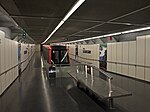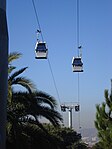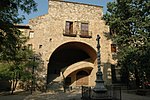Teatre Victòria

The Teatre Victòria ("Victoria Theatre") is a theatre in Barcelona, Spain. The theatre was designed by Andreu Audet i Puig and was inaugurated on 22 April 1905 as the "Pabellòn Sorianno theatre". In 1916, the theatre was sold to John Fradera, who renamed it to "Teatro Victoria". The company changed shareholders until 1954, when the last owners, Bergada, Bosch and Tolosa, sold them all to the Barcelona industrialist, Jaime Balaguer Sarriera whom they met on an advertising campaign. In 1980, Jaime Balaguer retired and his sons, Jordi and Ricardo Balaguer took over the programming. In 1986, with a 20-year rental agreement, the company Tres per Tres was founded, formed by Tricicle, Dagoll Dagom and Anexa, the company assumed the management and programming of the theatre and remodeled and modernized it in 1992 with the architectural project of Manuel Bosch, Fernando Domínguez and Montserrat Nogués. On 22 January 2002, Tres per Tres purchased the theatre. In June 2019, it was purchased by the illusionist El Mago Pop.
Excerpt from the Wikipedia article Teatre Victòria (License: CC BY-SA 3.0, Authors, Images).Teatre Victòria
Avinguda del Paral·lel, Barcelona Sants-Montjuïc
Geographical coordinates (GPS) Address Nearby Places Show on map
Geographical coordinates (GPS)
| Latitude | Longitude |
|---|---|
| N 41.3747756 ° | E 2.1687885 ° |
Address
Avinguda del Paral·lel 67
08004 Barcelona, Sants-Montjuïc
Catalonia, Spain
Open on Google Maps









